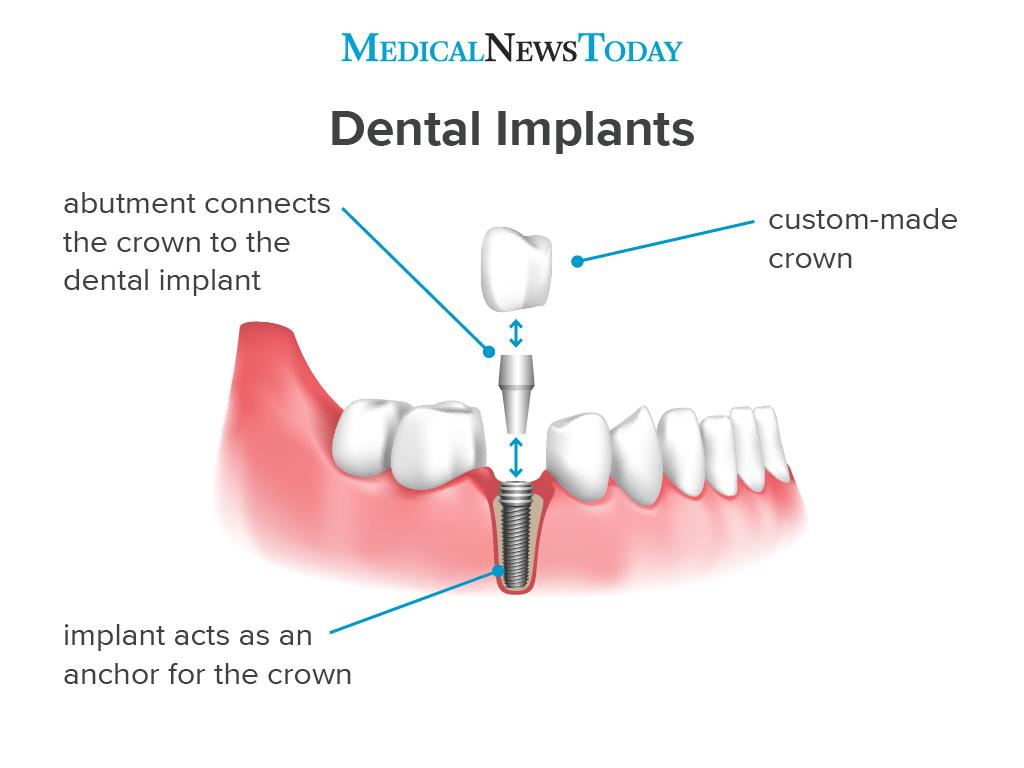All about Dental Sense
Table of ContentsExamine This Report about Dental SenseUnknown Facts About Dental SenseThe Greatest Guide To Dental SenseThe Best Guide To Dental Sense
are clinical gadgets surgically implanted into the jaw to bring back an individual's ability to eat or their look. They provide assistance for man-made (phony) teeth, such as crowns, bridges, or dentures. When a tooth is shed as a result of injury or disease, a person can experience complications such as quick bone loss, malfunctioning speech, or adjustments to eating patterns that result in discomfort.Dental implant systems contain an oral implant body and oral implant joint and may likewise include an abutment fixation screw. Dental implants. The dental implant body is operatively placed in the jawbone instead of the tooth's root. The oral implant abutment is generally connected to the implant body by the joint addiction screw and expands via periodontals into the mouth to sustain the affixed synthetic teeth
(https://justpaste.it/hj6ob)Structure of The Dental Implant System choosing oral implants, talk with your oral copyright about the potential benefits and dangers, and whether you are a candidate for the procedure. Points to think about: Your total health is an important element in establishing whether you are an excellent prospect for oral implants, how much time it will certainly require to heal, and the length of time the implant may remain in place.
Cigarette smoking might influence the healing procedure and reduce the long-term success of the dental implant. The healing procedure for the dental implant body may take a number of months or longer, throughout which time you generally have a temporary joint instead of the tooth. the dental implant procedure: Meticulously comply with the dental health instructions offered to you by your dental provider.
Fascination About Dental Sense
Implant failure can cause the requirement for one more surgical procedure to fix or change the dental implant system. Restores the capability to eat Restores cosmetic look Aids keep the jawbone from shrinking as a result of bone loss Preserves the health and wellness of the surrounding bone and gums Assists keep surrounding (neighboring) teeth stable Improves quality of life Damage to surrounding natural teeth during implant placement Injury to the surrounding cells during surgical procedure, such as sinus perforation Injury throughout surgery (for example, fracture of surrounding jawbone) Inadequate function, such as seeming like the teeth do not bite with each other normally A sensation that the tooth hangs or turning in position resulting from an abutment screw loosening Implant body failure (looseness of the implant body) due to systemic infection, which might be more most likely in patients with uncontrolled diabetes because of local infection in bone and gum tissues supporting the implant body due to delayed recovery, which may be most likely in people that smoke Trouble cleaning up the periodontals around the dental implant, leading to bad dental hygiene Without treatment gum condition Post-surgical numbness because of nerve impingement or damage Always inform healthcare suppliers and imaging technicians that you have dental implants prior to any magnetic resonance imaging (MRI) or x-ray procedures.
FDA is not knowledgeable about any kind of adverse events reported for MRI or x-ray procedures with dental implants. Oral implants systems are normally made from materials that adhere to international consensus requirements of the International Organization for Standardization (ISO) or ASTM International. These standards have information of what makes a risk-free material.

An oral implant is a framework that changes a missing tooth. With screw-like gadgets, the specialist inserts a dental implant right into the jawbone, and it serves as an anchor for a synthetic tooth, called a crown. A device called an abutment connects the fabricated tooth to the oral implant. The crown is custom-made to fit the individual's mouth and match the shade of their teeth.
Not known Incorrect Statements About Dental Sense
Some people are not qualified for oral implant surgical treatment. It is for oral surgeons to operate people with: intense illnessuncontrollable metabolic diseasebone or soft cells condition or infectionIf these issues are solved, a person can have the surgery. In, dental specialists avoid from operating individuals with: If individuals with any one of the my latest blog post above go through oral implant surgical treatment, there is a higher threat of the implant stopping working.

Oral dental implant surgical procedure is a tailored process. It's not the very same for every person. The following offers a basic introduction of what you can expect your dentist, oral specialist, periodontist or prosthodontist to do: Put the dental implant operatively. Provide you time to heal. Attach the message and final crown, bridge or denture.
Next off, your cosmetic surgeon will meticulously put the oral implant into your jaw. If your implant is near the front of your mouth, your dental practitioner will certainly make a momentary tooth for you to use till you recover.
The Dental Sense Ideas
Throughout the healing phase, your jawbone must fuse to the dental implant. This procedure can take anywhere from 3 to nine months.
When your dental implant heals, your dentist can attach the abutment (little connector message) and your last reconstruction (crown, bridge or denture). This usually takes regarding one hour to finish and might need a 2nd minor surgery. You should not really feel any kind of pain during your dental implant procedure because your provider will certainly use medication to numb your gum tissues.